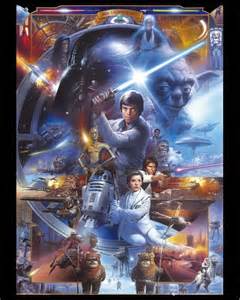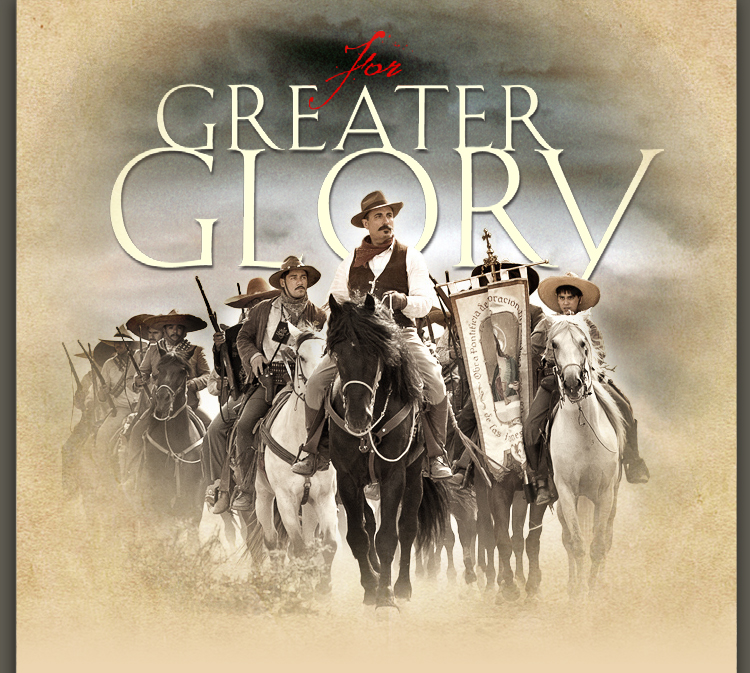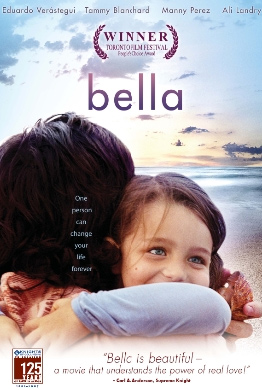 Now that I have been leading everyone on with vague references to symbolism, Princess Leia defecting, Kersher fighting with Lucas, Fisher fighting with Ford, and so on, let me tell you my biased opinion. After seeing the 3 or so deleted scenes, reading Leigh Brackett’s script, seeing a couple interviews (Kershner’s and Harrison’s), and reading the book “Empire building”, I have come to the conclusion that due to Lucas alone, and against Harrison’s, Fisher’s, and Kershner’s ideas–the ending was what it was.
Now that I have been leading everyone on with vague references to symbolism, Princess Leia defecting, Kersher fighting with Lucas, Fisher fighting with Ford, and so on, let me tell you my biased opinion. After seeing the 3 or so deleted scenes, reading Leigh Brackett’s script, seeing a couple interviews (Kershner’s and Harrison’s), and reading the book “Empire building”, I have come to the conclusion that due to Lucas alone, and against Harrison’s, Fisher’s, and Kershner’s ideas–the ending was what it was.
1. good-friend-turned-bad dies, but not without a tearful-and repentant-farewell. Due to either Harrison’s involvement or Kershner’s (but not Leigh Brackett’s script or I think Lucas) the decision to villify Han Solo’s character was done in such a way that I believe was not planning to survive the rebellion, or make amends to the princess, but definitely allow him to make a noble and sorrowful departure to the afterlife and from the movies forever. Harrison said in an interview that Han Solo should have died in Episode V (“but Lucas couldn’t have dead Han toys”). I agree. In the deleted scene with Han and Leia arguing in the hallway about Han not caring about the rebellion, and saying angrily, that he wanted to “make a woman” out of her, I think it was evident which direction Kershner, Fisher, and Harrison were going. Nonetheless, this was not without sympathy. Solo is seen bravely saving Luke on Hoth, and remains hilarious throughout the film. Problem is, he’s hitting on his friend’s girl–in a rather threatening way–and that’s a rather irredeemable characteristic for a hero, and a perfect way to solve a love triangle. Villify the best friend, but make him say sorry before the end and have everyone miss him. (Apparently Lucas wasn’t enthralled by this concept, and told Kershner that he was “ruining my movie”)
2. knight gets the princess. Due to–I believe–Fisher or Kershner’s involvement, (not in Leigh Brackett’s script), Luke was supposed to get the princess in the end. Problem is, that didn’t exactly happen. According to “Empire Building” Fisher was fighting with Harrison over the script and got really mad with the final scene between the Princess and Solo. In the deleted scene #1, Leia is evidently attracted to Luke and Luke stops himself from telling her he likes her because he knows he has to go to Dagoba, but they almost kiss before C3P0 interrupts the situation and embarrasses both. Then Leia is angry when she finds out both Luke and Han are abandoning the rebellion to do their own things. The love between a princess and a teutonic knight is not unbeknownst–and it creates just the right amount tension and wistfulness you would expect between duty and love to be suddenly solved in an American sort of story (and remain tragically unfulfilled in a Korean or Indian drama). We evidently have found the hidden romance that Kershner said he desired to be “subtle” as well as his goal for you to see “Luke’s soul”. Yet instead we have an awkward scene where Leia randomly smacks Luke presumably to make Han mad, and Luke acting very casual and pleased (as if this is a common occurrence)–and everyone promptly forgetting this rather unpleasant lack of discretion on both sides. Furthermore, Luke runs away from the esoteric monkish instructor because of his friends (and for love above honor undoubtedly) because his heart tells him to. In the end, the princess is suddenly trapped with a suspicious stranger/knave #2 and hears his voice (her instinct above her reason perhaps) tell her to find him, despite possible danger (which she has been fearing throughout the entire story). This is once again the perfect sort of meeting, where our knight can rescue the princess from her own sort of entrapments, and where our princess can save him from his own darkness. Indeed our hero falls into the heroine’s arms–and–they awkwardly separate, get a robotic hand replacement, and stare out into the starry sky…looking for the other guy.
3. Princess regrettably betrays the knave that’s been threatening and hitting on her. I know this is a little hard to believe, but it makes the most sense in keeping with story. It gets the knave out of the way, and helps the princess make a bad decision that she needs to choose to get out of by rescuing the knight. The first scene she has, she’s arguing with one of her top commanders, (the knave) because she’s worried about her people (the rebellion). Then in the deleted scenes, Han Solo (the knave) says he doesn’t care about her rebellion. Big mistake. The knave also apparently doesn’t respect her leadership as a woman either, because he thinks she still needs to “become a woman” by depending sexually on him. By now our feminist impulses should be apalled and shocked. Then the knave threatens to seduce her when they are alone, making her very angry and brooding. Finally when the knave forcefully kisses her, and we hear her flounderingly say she likes “good men”–the film cuts back to the scene where the knight is practically babysitting a child and an old man (r2 d2 and yoda) which is just the sort of man that women want anyway–respectful and kind. (Neither of which the knave is doing). Then we see a symbolic foreshadowing of the princess’ betrayal. The princess is brooding after the knave’s advances, and she remains alone in the cockpit of the ship–showing her readiness or desire to take control of the situation. Then out of the darkness, she sees a small monster come to the window–(representing some sort of demon or trouble that she invited). Then she gets the knave, but he is also inside of an even larger monster–and gets out this time. This represents the trouble and betrayal that the knave brought to both of them by harrassing the princess, and it also neatly foreshadows the princess’ trouble and future betrayal she brought to the knave by her desire for vengeance. Then the betrayal scene is also very subtly cut out. We see the devil (Darth) inviting them over for a meal, in which the shock is the knave’s–not so much the princess’–but we never see what deal he has made with them. Next we see the knave being tortured–not the princess, interestingly enough. Then the knave is led to the gallows, and the princess seems really, really regretful though not shocked, nor in love, but regretfully, and the knave repents of all his knavery and is executed. It’s a little dark, but I suspect it related to how Fisher felt about the whole thing. (According to “Empire Building”, Harrison’s ad-libbing the freezing scene so infuriated Fisher against Harrison, that she followed him arguing and shouting.) Furthermore, it adds just the sort of contrast to the story that shows what our knight in shining armor overcomes–a desire for vengeance or power. But it also allows the princess to return to love again, repent by saving the knight, and last but not least–be rescued by–our faultless hero. It’s just the sort of thing that allows both feminism and traditionalism to meet–and just the sort of thing both Kershner and Fisher would have wanted.
4. Princess makes deals with the devil for the sake of her people. This is the most complicated plot twist, but I suspect if Lucas hadn’t stopped it, this might have been Kershner’s real ending. It solves all 3 aspects (love triangle, friend’s death, princess’ betrayal) in a very logical and character-driven way. When the princess learns that both the knight and the knave are abandoning the cause, she goes to deep but not impossible measures–she makes a deal with the devil. In this case the devil is a young and rising commander (Darth) whose desire is to overthrow the aging and insidious emperor. The Princess either gives up her men to the enemy commander (Darth) because she believes the cause is impossible against the emperor without a little help from the dark side, or because she thinks that it might awaken her men to have something to fight against. Personally, I think the first deal makes more sense because it’s closer to what Darth offered Luke–a chance to join him and overthrow the emperor. Furthermore, it explains why Leia was practically dragged away by Solo, if she was planning to stay and meet Vader when he arrived. Furthermore, it would explain why Leia so quickly knew it was an imperial droid and why Vader also quickly knew where their base was. It was a deal similar to “the Hunt for Red October” where both imperial and rebellion troops don’t know that their leaders are simultaneously doing in order to join up. Vader starts his coup soon after that, killing the top leaders who might suspect what is going on. It would also explain why Vader invaded by foot, and near the front of his troops, if he wanted to “Arrest” the princess before she might have gotten shot. It also explains Vader’s confusion when the ship takes off. However after that, things get muddled. If the princess truly wanted to defect, why did she stall until Cloud City, and seem confused/suspicious of Lando? It makes sense that Vader would make a deal with her so that he could get Skywalker, but it doesn’t make sense what exactly Leia would be gaining by this venture. Was she hoping to simultaneously hide her rebel rendezvous point (she was surprised they didn’t ask) while she was trying to climb the ranks with Vader in a coup over the emperor? Perhaps she was also wondering what she was worth to Darth, and was inconclusive. Needless to say, it gave Darth a “victory” and rise in his popularity by finding the base, a reason to execute the emperor’s men, and fill the ranks with his own men–all necessary to finish the coup over the emperor. It explains the Princess’ beginning brooding looks, and broken conscience which weakens her from the knave. Mysterious and defeated words (completely out-of-character for the princess) such as “yeah out with the rest of trash” and “my hands are dirty” begins to make sense why she is trapped with a smuggler, doesn’t like it but doesn’t want to meet up with any of the rebellion (if she is defecting the dark side and protecting them from it) and how she ended up needing to return to the knight in shining armor in the end.
In Conclusion, the knight needed to leave the princess to discover his inner darkness, and he needed to free the princess from her own inner darkness as well. The knight needed his friend to act like a knave so the princess could be vulnerable and rescuable–which was impossible for him to breach before. The princess needed to be both powerful and intelligent for our modern sensibilities and yet somehow vulnerable to the knave–so we needed her conscience weakened by her own tactical machinations. We needed the knave dead yet repentant–so we made him betrayed by the princess so he could forgive her. We needed the princess remorseful for her coldness–but directed towards the right hero instead. We needed the hero to resist temptation to neglect his heart and his friends–yet also resist vengeance and hatred. We needed an old and withered instructor who would impart some wisdom–but no love or hope, so that our hero could choose both and rise above the instructor. Our hero needed to choose love that our princess so desperately needed, and hope for a cause that was so abandoned by all. Both knave and princess fell to inner darkness–but our hero overcame temptation, and was able to help our princess. Now he must work with the princess and fight against despair and vengeance–for a new Republic–with hope, love, and peace.










